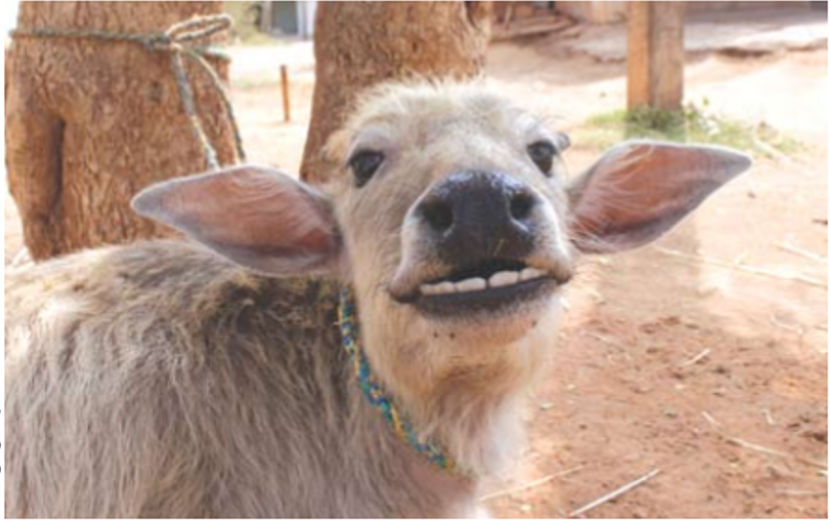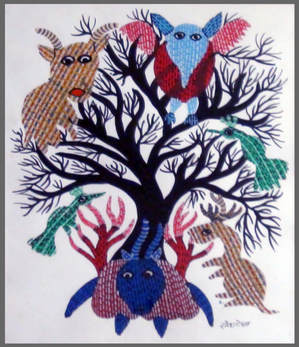|
We have been coaxed from an early age to drink milk to become healthy and strong and we have been taught that milk is the “perfect food”. It has now fallen from its pedestal as milk and milk products are being blamed for being a contributing factor in several health problems. In India, the land of Krishna, the cowherd-God, milk is sacred. Milk is used for worship in temples and as offering at prayer time in homes. Milk is equally venerated in other countries – notably the US and Holland, where the per capita consumption is the highest in the world. We have been coaxed from an early age to drink milk to become healthy and strong and we have been taught that milk is the “perfect food”, providing us so many essential nutrients. So when I first came across an e-mail forward which listed all the ways in which milk was terrible, I went into denial. Just another crank message like so many others in cyber space, I thought. But gradually we found milk falling from its pedestal. Milk and milk products were blamed for being a contributing factor in several human health problems by many prominent medical professionals and scientists - experts not employed by the Dairy Industry, I must say- whose credentials are difficult to dispute. Here are the names of two of them who’s websites can be looked up for a fund of information on milk: Dr. Frank Oski, M.D., author of ‘Don’t Drink Your Milk!’, is the Director of the Department of Pediatrics of Johns Hopkins University School of Medicine and the author of several medical textbooks. In the first chapter of his book, Dr. Oski states that the drinking of cow milk is very strongly linked to the origins of atherosclerosis and heart attacks; also to iron-deficiency anemia and colic in infants, arthritis, headaches, muscle cramps and multiple forms of allergy. Dr. William Ellis, a retired osteopathic physician and surgeon in Arlington, Texas, who has researched the effects of dairy products for 42 years. Dr. Ellis says dairy products are “simply no good for humans... There is overwhelming evidence that milk and milk products are a major factor in obesity”. He also says that he has conducted 25,000 blood tests on his patients during his long practice, and the tests showed conclusively that adults who used milk products did not absorb nutrients as well as those who did not consume milk. The poor absorbption in turn meant chronic fatigue. What about Calcium? For most of us, milk is calcium. How will your child’s bones grow? How can you avoid osteoporosis without milk? But like the belief that tobacco was good, this seems to be another myth which is being shattered. It is true that milk has calcium – but not in a form that is easily absorbed by the body. One of the most serious problems caused by a calcium deficiency is osteoporosis, a condition characterized by the loss of 50 to 75 percent of the person’s original bone material. In the U.S., 25 percent of 65-year-old women suffer from osteoporosis. If milk provides calcium, it is strange that the US which has the highest per capita dairy products’ consumption also has one of the highest rates of osteoporosis. It has also been found that those prone to muscle spasms and cramps (explained by low levels of blood calcium) were milk drinkers. How to increase calcium levels? If we do not drink milk, where do we get our calcium from is a question many anxious mothers would ask. To which the counter question is “Where do cows get their calcium from?” Cows get calcium from green plants and grains and so can we. All green leafy vegetables, fruits and nuts contain calcium. Raw sesame seeds are said to contain more calcium than any other food on earth and leafy greens, dates, figs and prunes are almost as good. So, if we eat fruits and vegetables daily and raw nuts, seeds and dry fruits often, we cannot possibly have calcium deficiency. Why don’t our doctors tell us that? Also, many leading medical researchers agree that the best way for most people to increase their calcium level and strengthen their bones is to reduce their protein intake- not increase calcium intake- and specifically to reduce consumption of animal products. The reason is that animal products and other sources of high protein are very acidic, and the blood stream must balance this acidic condition by absorbing alkaline minerals such as calcium from the bone structure. Why is milk difficult to digest? Lactase and Renin are two enzymes required to digest lactose and protein in milk. But according to Dr. Oski, between the age of one and a half and four years, most individuals lose these enzymes. Milk also contains Casein along with its protein – and there is 300 times more casein in cow milk than in human milk. Casein is meant to help in the development of big bones of the calf. Casein coagulates in the stomach and forms a dense difficult-to-digest mass which adheres to the walls of the intestines and makes it difficult for nutrients to be absorbed. The result is lethargy and fatigue. Our bodies stop producing the enzymes to digest milk in what appears to be a normal process that accompanies maturation. It reflects the fact that nature never intended milk to be consumed after the normal weaning period. This accounts for the majority of the world’s adult population being “lactose intolerant,” meaning they cannot digest lactose, the sugar in milk. Humans, like all mammals, nourish their infants during infancy with milk from the mother. Part of the very definition of a mammal is that the female of the species has milk-producing glands in her breasts. But, normally, all species get weaned - humans are the only species that never get weaned! The milk of each species appears to have been specifically designed to suit and protect the young of that species. Cross-feeding does not work. Heating, sterilization, or modification of the milk in any way destroys its value further.
This article was first published in Eternal Bhoomi Magazine, VOLUME 1, ISSUE - 2, APR - JUN, 2010
0 Comments
Modern civilization celebrates the production of huge amounts of machine made things. Produced alongside are huge amounts of waste of every kind – plastics, paper, hazardous and poisonous waste which often end up polluting our waters and degrading our lands. We need to go back to valuing our crafts, which does not thrash our planet, if we wish to live sustainably on earth.There is an old story about a girl and her red shoes which illustrates well our modern civilisation’s struggles with a machine-dominated world.
A poor, young orphaned girl who lived with her oft disgruntled aunt, once made herself a pair of red shoes with pieces of cloth and thread and leather and her own enthusiastic hands. It wasn’t the prettiest pair but the shoes had their charm - she loved them and she danced with them and they served her well. One fine day, a lady arrived at her village in a dazzling chariot and asked her if she would come along to live in her big house. She went with the lady and soon she was scrubbed and cleaned and taken to a shop to buy beautiful clothes and the most shiny, fancy pair of red shoes in the world. It was a whole new life - oh, how she loved to wear those shoes and dance to her heart’s content! To get out of the watchful and restrictive eyes of her new foster mother she walked to the nearby woods, one day, and ran and skipped and danced away. Late in the evening, she was tired and afraid in the dark forest; she tried to remove her smart red shoes to rest – but could not. She just lay down exhausted and slept. The next day, as soon as she woke up, her red shoes seemed to make her dance by themselves… and she danced on and on, but wanted to stop and eat and rest. She came to a village and danced to a cobblers shop and asked him to remove her shoes. The kind man gave her some food but could not remove her shoes – they seemed to have stuck to her feet. Afraid to go back home, she wandered around – or rather kept dancing around trying every now and then to remove her shoes. Absolutely tired and helpless, she went back to the cobbler - he tried hard with all his tools, but could not wrest them off her feet; she finally managed to stop dancing – by getting her feet cut off. It’s not a pleasant story – and neither is the story of our modern civilization which continues to celebrate the production of huge amounts of machine made things at every level and in every sphere. Over the last two centuries of industrialization especially, our addiction to stuff has become suicidal. Produced alongside are huge amounts of waste of every kind – plastics, paper, household food waste and hazardous and poisonous waste which often end up polluting our waters and degrading our lands. We need to go back to valuing our crafts if we wish to live sustainably on earth. As much as oil and capitalism with unending growth are part of the problem, craft and organic agriculture can be part of the solution. The usual question now would be – are we to go back to the jungles? We cannot stop development, can we? The answer is not ‘no development’, but development that does not trash the planet or exploit the 80% of “less developed” people or 100% of future generations. Going organic and engaging in a craft or buying handloom, handicrafts and other local hand made products, are a few of the many ways in which we can live more responsibly on our planet – and at the same time live with beauty and support the craftspeople. It is one way in which we can celebrate the hand made shoes that make us dance happily and stop the frenzied ‘dance’ of a machine dominated life. It can make life more beautiful and deeply satisfying. This article was first published in Eternal Bhoomi Magazine, VOLUME 4, ISSUE - 1, JAN - MAR, 2013 |
Archives
October 2017
Categories |


 RSS Feed
RSS Feed
